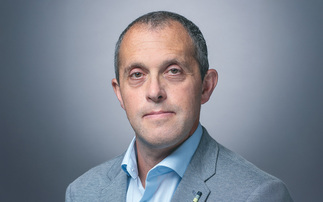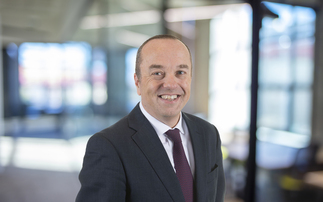Witan's decision to move to a multi-manager structure should improve performance, securing a more prosperous future for its shareholders, believes James Budden, marketing director
Witan may be a new arrival on the bustling multi-manager scene - but with £1.45bn under management and a long-track record of delivering performance for clients, it is certainly no stranger to financial markets.
The investment trust, which was originally established back in 1909, has earned an enviable reputation for delivering on its promises down the years and currently boasts over 60,000 shareholders.
But a desire to further improve performance and build an investment model, which is better suited to today's marketplace, led the board to announce a major overhaul of the business back in October 2003.
Instead of relying on one manager - Henderson Global Investors - the Trust said it would be appointing a string of fund managers from around the world who had proved themselves to be among the best in their specialist fields.
As well as ensuring that the Trust had access to some of the best-performing names in the business, the decision was also designed to capture the mood of investors who wanted to have increased manager diversification in uncertain times.
Switching to a best-of-breed structure was a radical move, agrees James Budden, Witan's marketing director, but it made perfect sense for everyone involved and the arguments put forward were pretty compelling.
"It's impossible to expect one company to be the best at everything," he says. "The board felt it was in the best interests of shareholders to find the most talented managers across the global funds market place to run the assets. We knew this would really help drive up the performance - and we're being proved right."
Preliminary results published by Witan, covering the year ended 31 December 2004, illustrate the point. The new team took over in September 2004 and the majority of managers outperformed their benchmarks over the following three months.
These figures played their part in lifting Witan's share price by 9.6% over the year - out-performing both the FTSE World and domestic indices en route.
It's certainly a very encouraging start, says Budden, but the best is yet to come.
It is performance over the long term which really counts.
So how exactly did Witan implement the revolutionary changes and who are the fund management houses sharing the responsibility for managing its assets?
The first stage was to take a detailed look at the existing offering to identify which areas had been a success for the portfolio and which could be sacrificed in favour of others with better growth prospects.
The results made interesting reading. The board discovered it had become rather reliant on its benchmark index and was also heavily exposed to mature Western markets at the expense of exciting opportunities elsewhere.
Aided by thorough research, chief executive Jim Horsburgh compiled an extensive list of potential firms which he believed could play a part in the new-look Witan Investment Trust and personally visited them all.
It was a fairly gruelling experience. As well as six UK-based firms, there were 12 international fund management giants to interview which meant thousands of air miles being clocked up over the next few months.
However, the hard work paid handsome dividends when Horsburgh and the board finally settled on an impressive list of names which are renowned for the strength of their individual expertise and knowledge in key markets.
The five new fund management companies chosen to work alongside Henderson had each demonstrated strong characteristics in areas such as investment process, stock picking, their ownership structures and past performance figures.
It's quite a select group, acknowledges Budden, but this, too, is a major benefit.
"Every one of the fund managers will have a part to play in the performance of the Trust," he explains. "Their respective investment styles complement each other they fit snugly into our overall strategic approach."
So let us take a closer look at the chosen groups and the areas of the market for which they have been handed responsibility.
Henderson manage the mainstream UK and US portfolios on an enhanced index basis. This technique looks to outperform an index through a multitude of low risk active transactions. It is not index tracking.
Hendersons are acknowledged market leaders in this form of management. The company also runs the UK smaller companies portfolio. Southeastern Asset Management based in Memphis and MFS from Boston have global portfolios. These managers can invest in any stock in any market worldwide.
Southeastern are pure stockpickers who aim to avoid capital loss while targeting an annual average return of at least inflation plus 10%. MFS rely on fundamental research and look to spot companies with substantial earnings growth trading at a discount. Brandes look after Japan and are deep value in approach - they take a long term view and do not follow the crowd. Wellington run the European (ex UK) mandate building a portfolio from the bottom up through research harvested from teams of experienced sector analysts. APS manage the Pacific (ex-Japan) mandate.
They invest with conviction and do not mind being unconventional. They look to enhance returns through the quality and knowledge of their team and proprietary research.
They are all respected management teams in their own right, but blending their different styles together, it is hoped, will produce impressive returns, as well as maintaining a healthy dose of diversification.
Most of the managers will be remunerated by performance fees, plus a low basic. The new base fee for investment management is 0.16%, points out Budden, compared to the previous level of 0.3%. The current TER for the fund is 0.6% (at 31 December 2004) which compares favourably with the average multi-manager TER of around 2%.
In other words your average fund has to outperform Witan by 1.4% just to catch up.
However, even though the hard work of choosing the teams is now complete, it doesn't mean to say Witan will be resting on its laurels over the coming months. Constant monitoring of the managers will be crucial to the overall success of the Trust, insists Budden, and close contact will be maintained at all times.
In his role as chief executive, Horsburgh will be charged with the task of tracking performance and presenting to the board on a monthly basis. In addition, the board members will meet the active fund managers twice-a-year.
When you look back over the last 18 months, it is remarkable how much has been achieved in such as short space of time, but it's obvious that the board and managers involved believe it's really only the start of a special journey.
Looking to the future, Budden is brimming with confidence about the Trust's prospects and has absolutely no doubt where it should sit in the marketplace. "Our aim is to offer a quality value for money alternative to the usual global multimanager offerings.
IFAs should view Witan as a vanilla fund suitable for a range of client needs from Isas to Sipps and as a robust core investment in any portfolio.
key points
• Viable alternative to other multi-manager vehicles.
• Ideal core holding central to a balanced portfolio.
Low TER compared to other investments.











